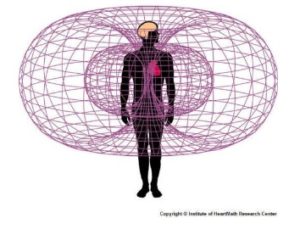We are the guardians of the most sacred moment in the lives of women and their families, with implications for the long term health of both. That moment is when nine months of hopes, anxiety, planning, purchasing, celebrating, putting up with being uncomfortable, being too big, being not big enough, being in pain becomes separation, relief, responsibility, and falling in love.
In a nation where the largest change in the religious landscape of the country is the 6.7% increase in “nones”, (people who say they do not identify with any organized religion), to speak of the sacred takes a bit more digging in. The word sacred (leaving aside the religious connotations), means to “set something aside” and “make it worthy of respect.”
So as the guardians of this moment, how to we insure that no matter what occurs in the birthing room/labor room/operating room, this moment is sacred.
It starts with creating a sacred space. This can be hard in the chaos of a hospital labor room that may be preparing for emergency interventions. So start where you ARE in control: in your own heart and mind. They say in medical school, if your patient is in cardiac arrest, the first step in resuscitation is to check your own pulse. Meaning, stop, take a breath, slow your heart, bring yourself into “coherence” (as the HeartMath people say) by calling on a feeling of gratitude. Now imagine the torus of energy around your heart. It looks like this:

Then reach out with the energy coming from this electromagnetic field of your heart to envelope the woman you are caring for, her partner, the caregivers, everyone in the room, each person who will be helping her. This calm loving energy can bring others into coherence, allowing them to think more clearly, more creatively, to be calmer, to make better decisions. (In a coherent team, there is freedom for the individual members to do their part and thrive while maintaining cohesion and resonance within the larger group’s intent and goals. Social coherence is therefore reflected as a stable, harmonious alignment of relationships that allows for the efficient flow and utilization of energy and communication required for optimal collective cohesion and action.
Now set your intention. As Gladys McGarey, MD the mother of holistic medicine, once said to me, “You can’t control death and you can’t control birth.” So, if you thought you were there to make something happen, you are kidding yourself. You are there to create an environment. You bring with you your experience of birth as a truly amazing and magical event. You bring with you your knowledge that birth can be easy, free of suffering, orgasmic, even if it doesn’t happen that way every time. I bring with me a faith that the universe is not random, that it is evolving, that each of us and everyone in the room with me has a role in that process. Think about what your bring. Bring your hope that the RIGHT thing will happen next. That everyone there is doing his or her best in that moment. That whatever happens, you can help to share your faith in the process. You can ease the suffering of the doctor or midwife, who are trying to make the right decisions. Of the nurse, who is trying to help keep her patient safe. Of the family members who are trying to support the birthing woman bring to birth the next member of their family. Of the mother who is working to bring in new life.
I once attended a birthing woman, who was being thrown out of her body by each contraction as she pushed. Really, she would just disappear for a few seconds and become unresponsive. Then she would return in a state of panic, not knowing where she was. The father was concerned, the nurse was alarmed and I had to bring coherence to that situation. I put my hands on both of her legs and imagined that I was the trunk of a great tree, grounded deep into the soil, gently holding her with my branches, keeping her connected to the earth. “You don’t have to push that hard,” I said, “lets breath together and let your uterus do some of the work.” Things calmed down, she stayed with me and of course, the baby was soon in her arms. Later she described feeling disoriented and scared. “I looked at my husband, and he looked scared. I looked at the nurse, and she looked scared. I looked at you and you didn’t look scared so I just kept looking at you!”
Did I know what was happening?…no, not really. Was I scared…well, yes. I hadn’t seen that particular version of birth before, although I had seen women leave their bodies in birth. Did I pretend nothing was happening that was out of the ordinary? Did I lie and say, “This is perfectly normal,” so that everyone would be unafraid? No, lying never works. What I knew, was to trust the process and to create an environment in the room so that the mother, father and nurse could also trust. That is the respect I believe is embodied in the definition of sacred. That was what I had to offer. Knowing that I was not in charge. Not knowing the outcome. (And yes, if the baby had been in trouble I might have been called upon to do something about it. If the mother had shown signs of physical deterioration, I might have had to intervene in a different way.) I was in my obstetrician brain watching all those things. But I was also in my heart, trusting the process, creating sacred space. Doing the good work of the Doula and the midwife.


